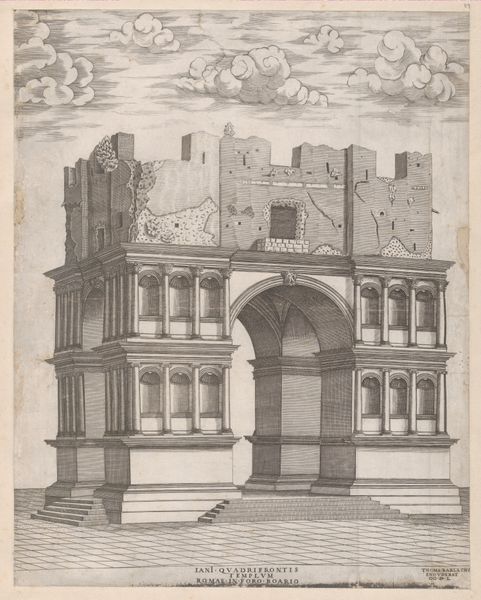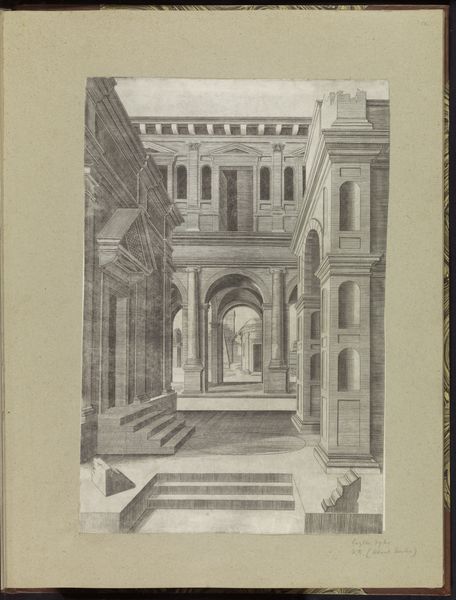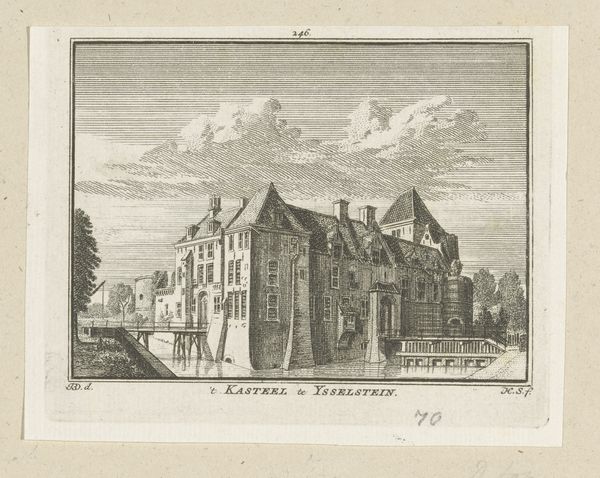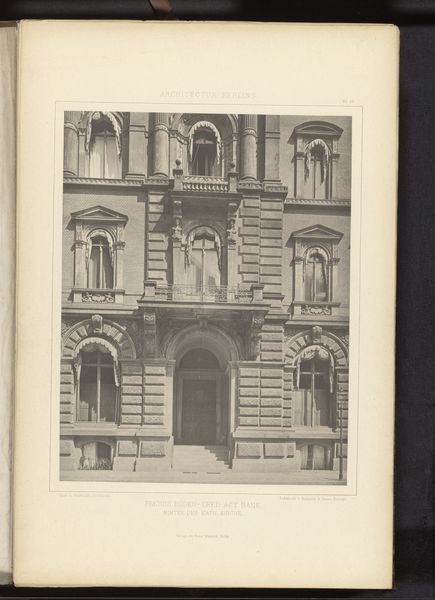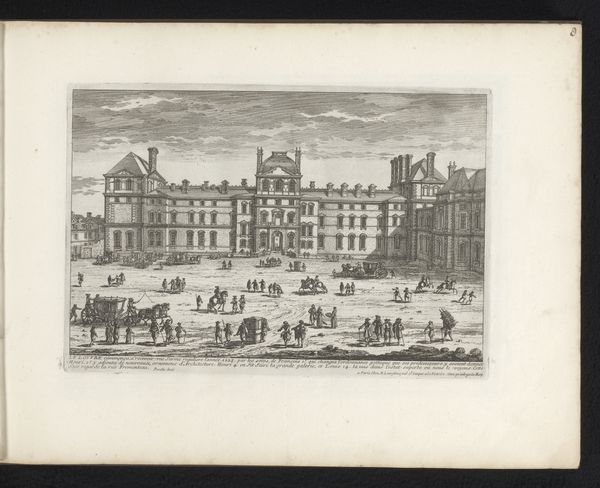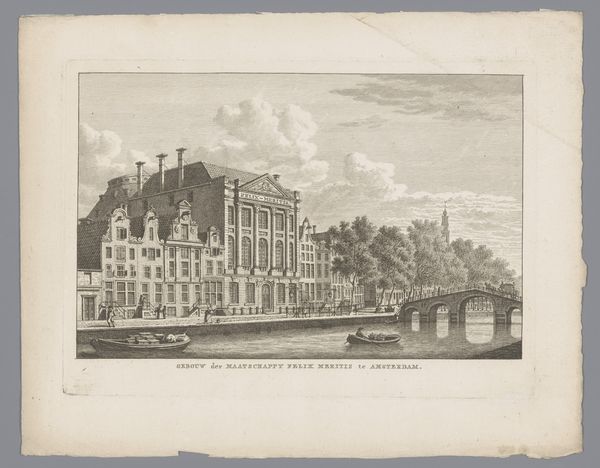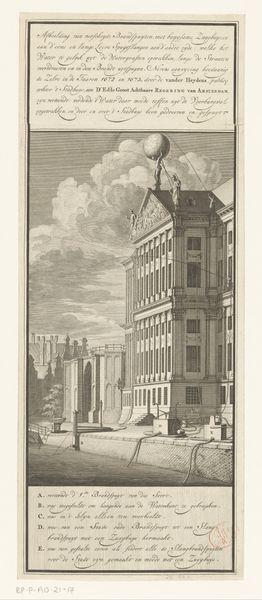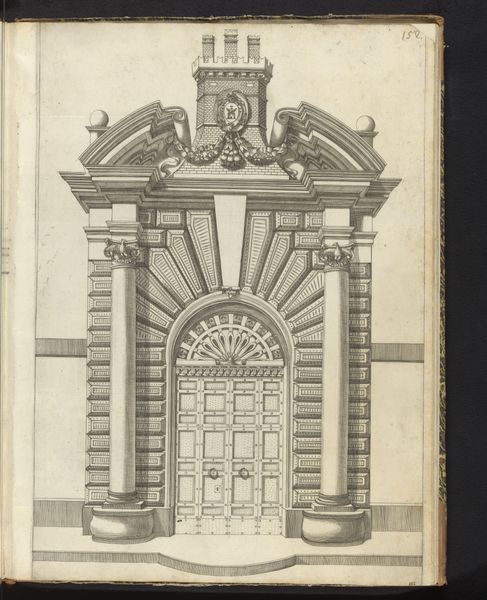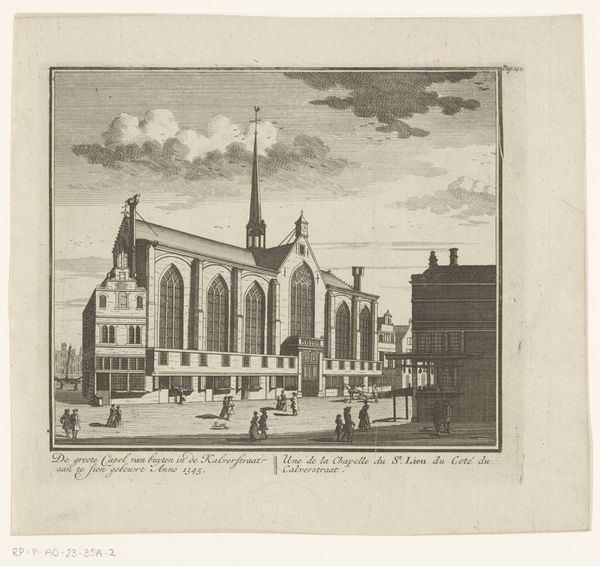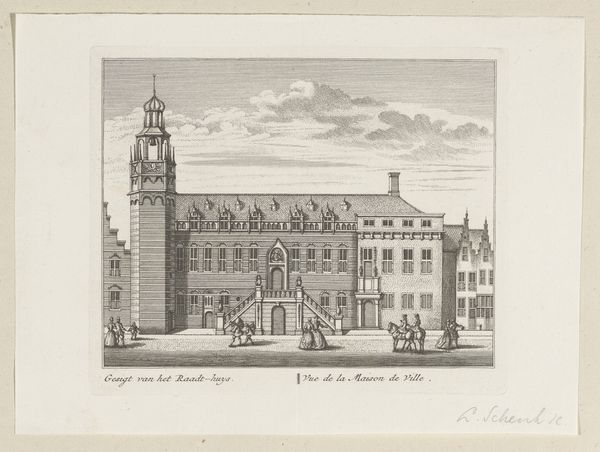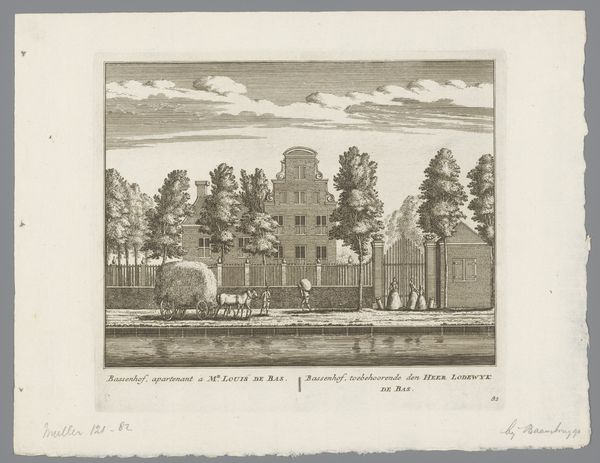
drawing, print, ink, engraving, architecture
#
drawing
# print
#
romanesque
#
ink
#
geometric
#
cityscape
#
academic-art
#
engraving
#
architecture
Dimensions: height 445 mm, width 343 mm
Copyright: Rijks Museum: Open Domain
This print of the Boog van Janus in Rome was made by an anonymous artist, using the technique of etching. The linear quality of the print gives the ancient Roman architecture a sense of strength. Etching requires the artist to use a sharp needle to draw an image on a metal plate covered with wax, which is then submerged in acid. The acid bites into the metal where the wax has been removed, creating incised lines that hold ink, and a reversed version of the image is revealed when printed. The mechanical process of printing allowed for the wider dissemination of architectural images, catering to the tastes of patrons and architects alike. The relative ease of etching meant that a craftsman could produce multiple images at a low cost. The print’s aesthetic simplicity belies a complex web of labor and commerce that gave rise to its creation. It reminds us to appreciate the artistry of anonymous hands and the cultural context in which it was created.
Comments
No comments
Be the first to comment and join the conversation on the ultimate creative platform.
